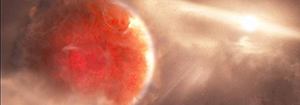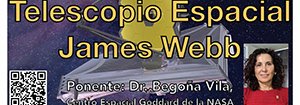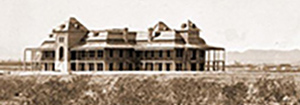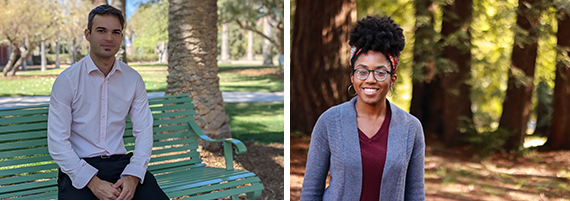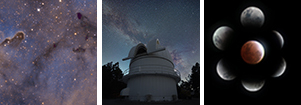Planetary Sciences has announced that Regents' Professor and National Academy of Sciences member, and Emeritus Professor in Planetary Sciences, Randy Jokipii, died on Jan 7, 2022. The following is copied from the LPL website:
"Our long-time friend and colleague Jack Randolph “Randy” Jokipii died on January 7, 2022. He was 82. He leaves us with many fond memories of his passion for science and education, food, and world travels. He was a major presence at the Lunar and Planetary Laboratory (LPL), playing a large role in the success of the department, educating and mentoring many students, postdocs, faculty and staff. He was often roaming the halls of the Kuiper building and enjoyed chatting about a wide variety of topics – always the great storyteller. He loved to travel and to tell of his adventures. He had over two million frequent flyer miles, and once circumnavigated the globe. He met Indira Gandhi on a trip to India, and proudly displayed a picture of the encounter in his office. Those that had the opportunity to work with him closely also remember fondly the numerous, deep, sometimes frustrating, but always productive conversations on science topics on the whiteboard in his office. Randy will be remembered for his devotion to intellectual honesty and always standing by his principles. He was a role model for younger scientists with a strong commitment to teaching physics.
Randy was born in Ironwood MI, on Sep 10, 1939. As a youth, he had a passion for astronomy, and built his own telescope, including grinding the mirror used for it. He was also proud to mention that he delivered the local newspaper in the community. He was also on the high-school ski team. He enjoyed returning to Ironwood to attend high-school reunions, including the most-recent one, his 63rd. Randy attended the University of Michigan where he earned a BSc in Physics in 1961. He attended graduate school at the California Institute of Technology, earning his PhD in Physics in 1965, working with Leverett Davis, Jr., who was a pioneer of the study of the interplanetary magnetic fields and their interaction with plasmas, such as the solar wind. During the summer of 1964, Randy worked for the Rand Corporation, and published a paper on the distribution of gases in the protoplanetary nebula. It was then that he met his wife, Bonnie. Randy then went to the University of Chicago to work with Gene Parker as a postdoctoral research associate. In 1967, he was hired as an Assistant Professor at the University of Chicago. In 1969 he moved back to California to take a position as Assistant Professor of Theoretical Physics at Caltech. In 1974, he moved to the University of Arizona, where he was hired as Professor in LPL and in the very new Department of Planetary Sciences (PtyS), with a joint appointment in Astronomy, by the new LPL director, Charles P. “Chuck” Sonett.
Randy joined LPL/PtyS at a critical point in the history of LPL. Just before Randy was hired in 1974, founder Gerard Kuiper had relinquished the LPL directorship to Sonett, an experimental space physicist working at the time on lunar magnetism with the Apollo program. Although Kuiper had conceived of the new academic department added to LPL, he was not necessarily supportive of adding faculty to do space physics theory. Kuiper died at the end of 1973, but opposition to space theory research continued to be widespread in LPL. Randy played a critical role within a small group of unofficial advisors to Sonett on the execution of a novel concept for the time: turn the observational astronomy unit LPL into LPL/PtyS, a multidisciplinary research and teaching unit operating under the rubric of solar system exploration, but staffed with observers, experimentalists, and theorists from all relevant fields, meeting the highest professional standards. With the small group of inaugural PtyS faculty, Randy designed and taught one of the first PtyS core courses for graduate students, a semester of planetary physics focused on transport theory and plasma physics. His first PtyS PhD student was Guy Consolmagno, now Director of the Vatican Observatory.
In 1975, Randy began serving as associate department head. He continued in that capacity under LPL’s next director, Bill Hubbard, who took over in 1977. Randy was a steadfast defender of the pioneering concept of LPL/PtyS as a multidisciplinary research and teaching organization, during a time of great transition and considerable turmoil. Randy also led an effort to submit a "decision package" to the Arizona legislature to fund an interdisciplinary theory program to be shared by LPL, Astronomy, and Physics. The proposal succeeded and the Theoretical Astrophysics Program was established in 1985. In 1997, Randy was named a Regents Professor in the University of Arizona. In 2001, he was elected to the National Academy of Sciences. He retired from the university in 2015, becoming Professor Emeritus. He is a fellow of both the American Geophysical Union and American Physical Society.
Randy was a pioneer in the physics of cosmic ray transport. He was a theorist, at a time when spacecraft measurements of the solar wind and high-energy charged particles were first being made. Randy’s work on charged particle transport still reverberates through the literature today. He was quite young in 1966, when he wrote the now classic paper Cosmic-ray Propagation. I. Charged Particle in Random Magnetic Fields, where he introduced the quasi-linear theory of charged-particle transport in turbulent magnetic fields like those seen in space. He was the first to relate the power spectrum of magnetic fluctuations to the cosmic-ray diffusion coefficients, which is a key parameter to understand a wide variety of physical phenomena in space, such as cosmic-ray modulation in the heliosphere, particle acceleration by shock waves, and solar-energetic particle emissions. There is an entire industry of researchers in both space physics and astrophysics using this theory. Randy started it all.
Perhaps one of Randy’s most notable scientific accomplishments was the prediction of the 22-year cosmic ray cycle. With LPL colleagues Gene Levy and Bill Hubbard, Randy wrote a famous paper describing the importance of cosmic ray drift motions. Later, in 1981, he wrote a paper that provided the physical foundation for the cosmic-ray drift motions in the heliosphere, which rather resemble a convection pattern. He noted that the drift patterns change with the solar magnetic cycle, which flips its sign every 11 years – taking 22 years to return to the same polarity.
Randy was also a pioneer in the large-scale computer modeling of cosmic ray transport. His codes reproduced spacecraft observations and led to many insights. Randy did not merely accept the numerical results without having a deep physical understanding of them. His well-regarded transport codes initially used idealized simple geometries and later extended to more-realistic geometries in numerous studies with his long-time colleague József Kóta. Randy also pioneered research into the physics of charged particle acceleration at shocks, authoring many papers on this subject. He was the first to note that shocks that move across the magnetic field accelerate particles at a much higher rate compared to those that move obliquely to the magnetic field. This is still the current paradigm, with important implications for the production of high-energy particles at astrophysical shocks such as those from supernovae, and from the Sun. He wrote many papers on the origin of so-called “anomalous” cosmic rays showing how acceleration of ionized interstellar atoms at the solar-wind termination shock naturally explains the observations. Randy also contributed to our understanding of how low-energy particles are accelerated at shocks – something referred to as the injection problem – through his collaboration with Joe Giacalone, who he hired as a postdoc in 1993 and who later joined the LPL/PtyS faculty.
Randy always remained committed to working collaboratively with other faculty in the department on research topics outside of heliophysics. For instance, working with Bill Hubbard, Randy contributed to the wave-optical theory of intensity fluctuations observed during occultations of stars by planetary atmospheres. A version of the theory was successfully applied to a Pluto occultation observed from the MMT telescope in 2007.
Randy was preceded in death by his wife of more than 55 years, Bonnie, and his son Galen. He is survived by sons Eron and Kevin.
Joe Giacalone and Bill Hubbard, with help from József Kóta, K. C. Hsieh, Marcia Neugebauer, and Neil Sheeley?






